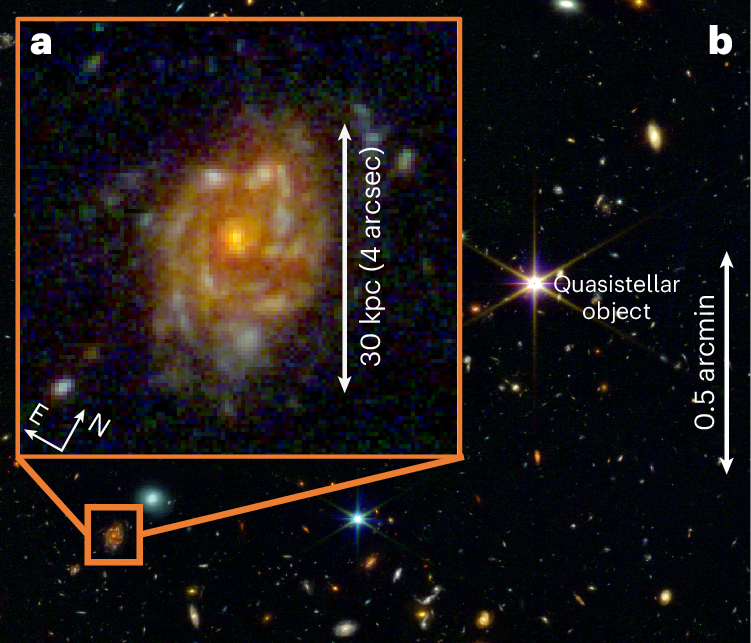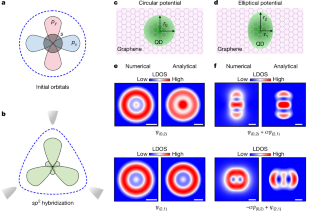2025-03-26 カリフォルニア工科大学 (Caltech)
<関連情報>
- https://www.caltech.edu/about/news/astronomers-find-giant-dinosaur-of-a-galaxy
- https://www.nature.com/articles/s41550-025-02500-2
ビッグバンから20億年後の巨大円盤銀河 A giant disk galaxy two billion years after the Big Bang
Weichen Wang,Sebastiano Cantalupo,Antonio Pensabene,Marta Galbiati,Andrea Travascio,Charles C. Steidel,Michael V. Maseda,Gabriele Pezzulli,Stephanie de Beer,Matteo Fossati,Michele Fumagalli,Sofia G. Gallego,Titouan Lazeyras,Ruari Mackenzie,Jorryt Matthee,Themiya Nanayakkara &Giada Quadri
Nature Astronomy Published:17 March 2025
DOI:https://doi.org/10.1038/s41550-025-02500-2

Abstract
Observational studies have shown that galaxy disks were already in place in the first few billion years of the Universe. The early disks detected so far, with typical half-light radii of 3 kpc at stellar masses around 1011 M⊙ for redshift z ≈ 3, are significantly smaller than today’s disks with similar masses, which is in agreement with expectations from current galaxy models. Here we report observations of a giant disk at z = 3.25, when the Universe was only two billion years old, with a half-light radius of 9.6 kpc and stellar mass of 3.7+2.6−2.2×1011M⊙. This galaxy is larger than any other kinematically confirmed disks at similar epochs and is surprisingly similar to today’s largest disks with regard to size and mass. James Webb Space Telescope imaging and spectroscopy reveal its spiral morphology and a rotational velocity consistent with a local Tully–Fisher relationship. Multiwavelength observations show that it lies in an exceptionally dense environment, where the galaxy number density is more than ten times higher than the cosmic average and mergers are frequent. The discovery of such a giant disk suggests the presence of favourable physical conditions for large-disk formation in dense environments in the early Universe, which may include efficient accretion of gas carrying coherent angular momentum and non-destructive mergers between exceptionally gas-rich progenitor galaxies.



